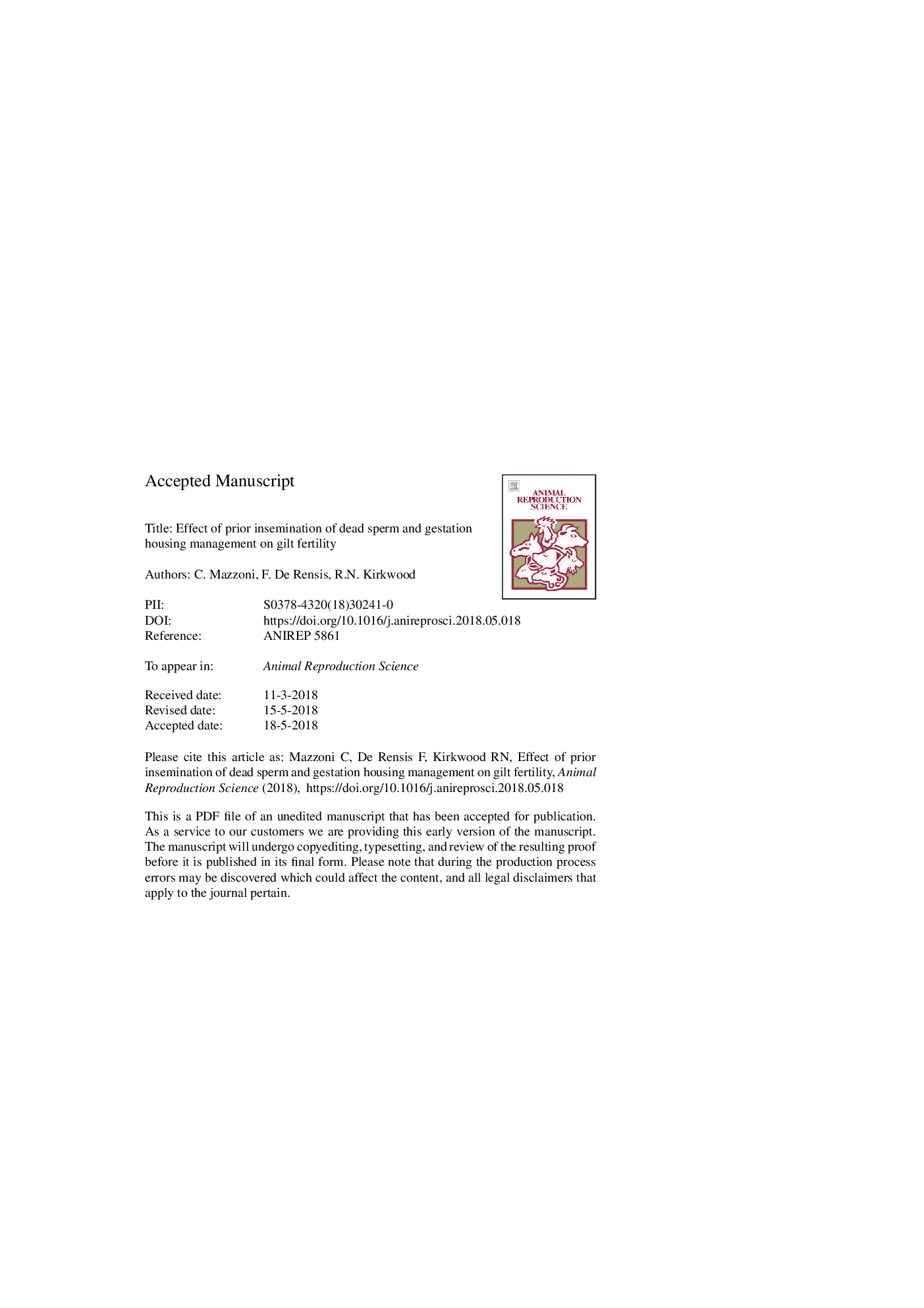| Article ID | Journal | Published Year | Pages | File Type |
|---|---|---|---|---|
| 8403800 | Animal Reproduction Science | 2018 | 11 Pages |
Abstract
Danbred gilts at about 120â¯kg were group housed for estrous detection. At detection of estrus, gilts either remained in pens (P) or were re-housed into individual gestation stalls (S) and were inseminated (DS), or not (SC), with a dose of frozen/thawed dead semen. Groups were P-DS (nâ¯=â¯81), P-SC (nâ¯=â¯70), S-DS (nâ¯=â¯98) and S-SC (nâ¯=â¯90). All gilts were inseminated with semen containing viable sperm at the second detected estrus and 24â¯h later. Pregnant gilts that were stall housed were moved to pens 35 d after insemination. There were no effects of insemination or housing management on farrowing rates or litter sizes.
Related Topics
Life Sciences
Agricultural and Biological Sciences
Animal Science and Zoology
Authors
C. Mazzoni, F. De Rensis, R.N. Kirkwood,
